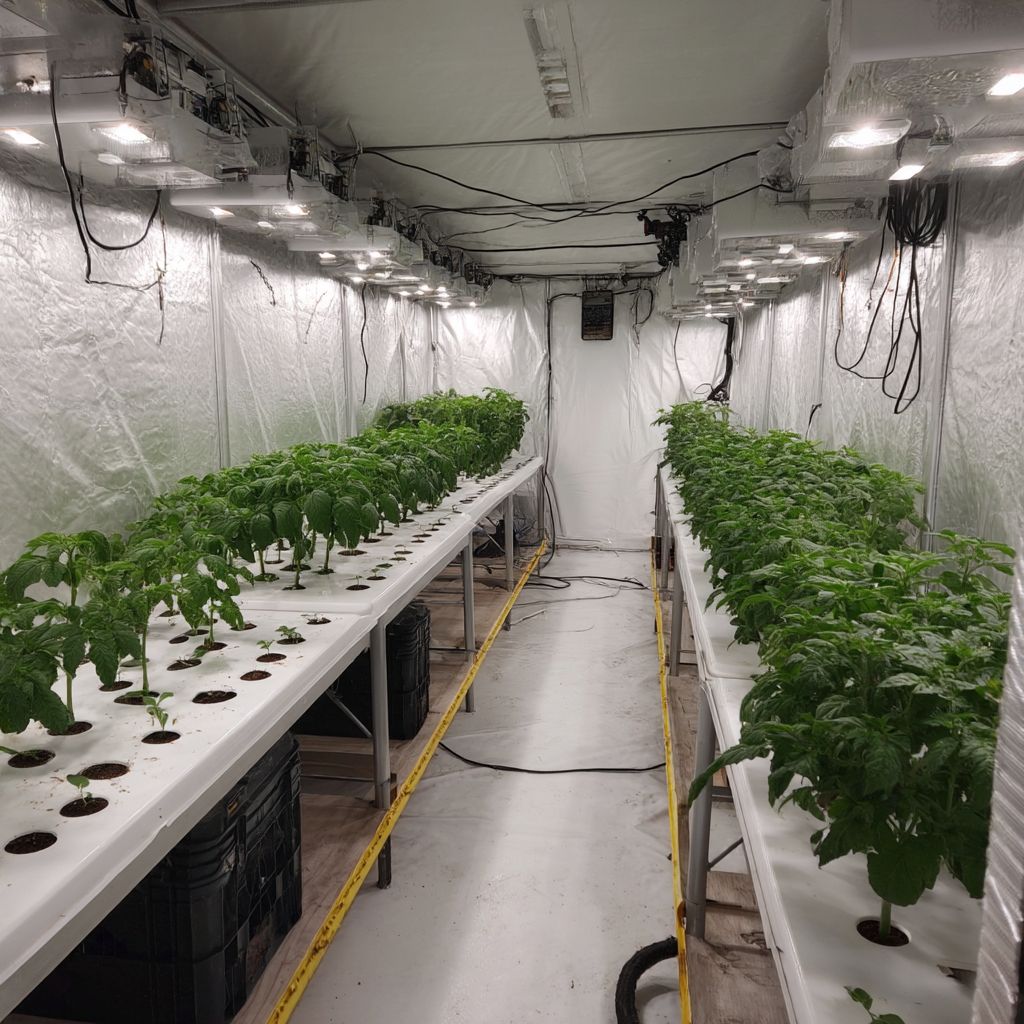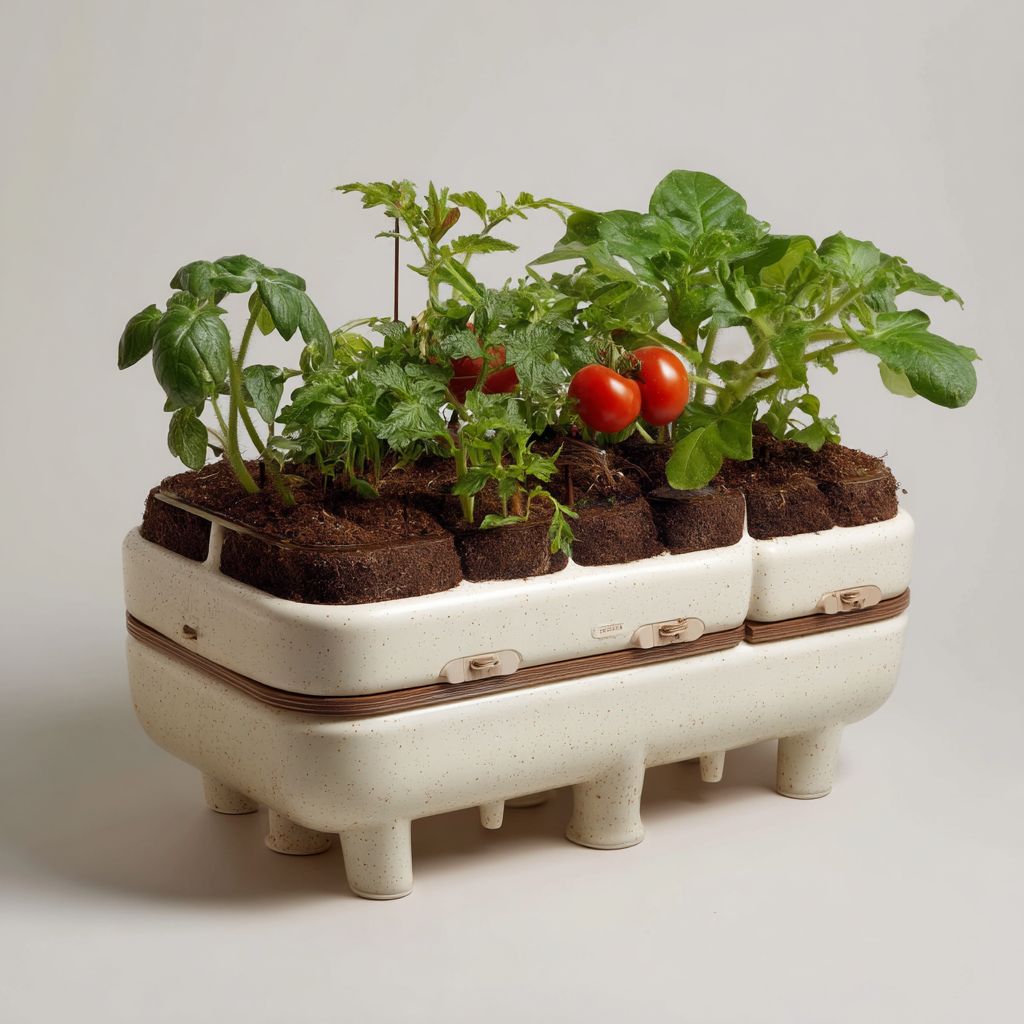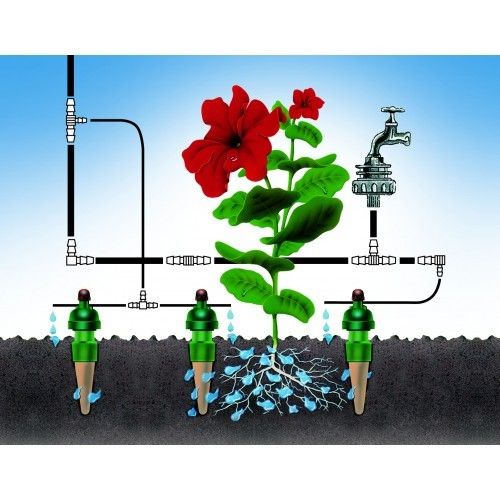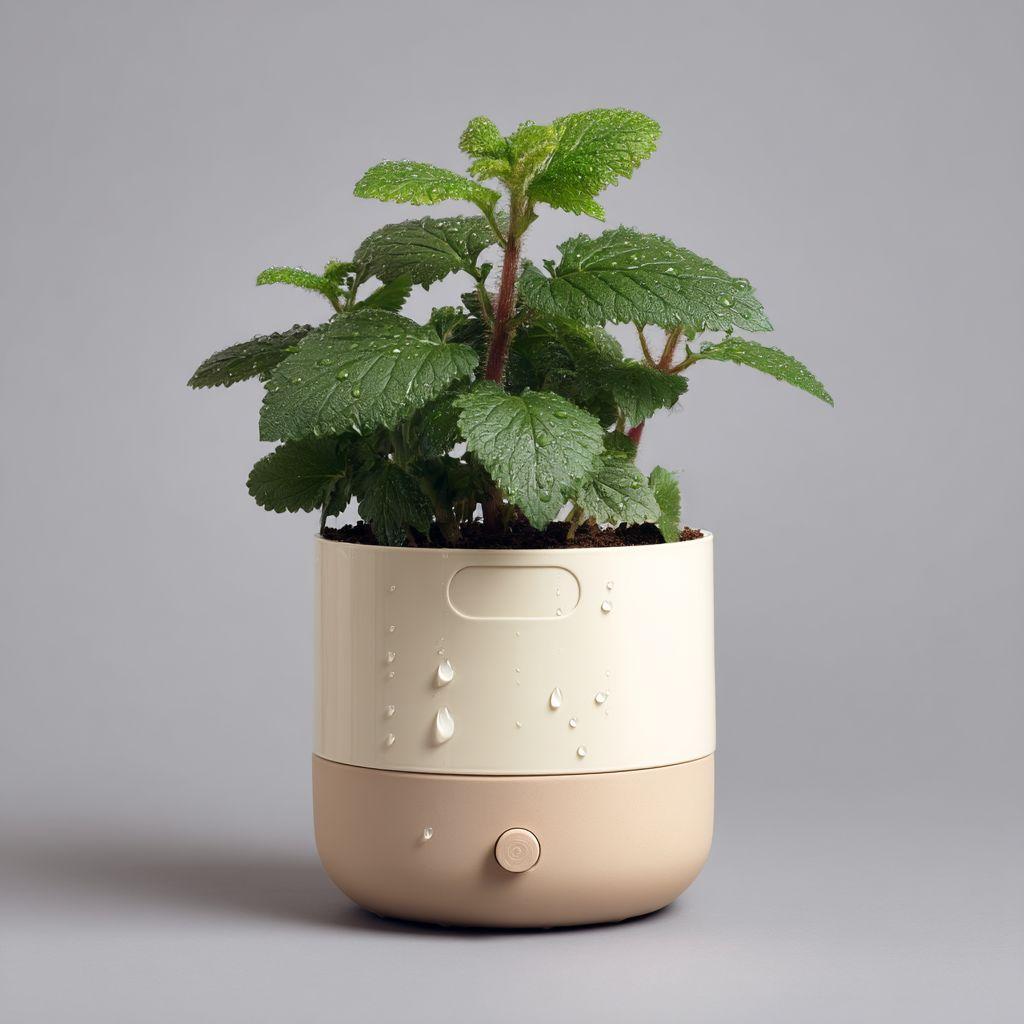Why Self-Watering Planters Work
Gardening is a rewarding hobby. It can, however, be time-consuming, especially when it comes to watering.
Enter self-watering garden pots. These innovative planters offer a practical solution for busy individuals and forgetful gardeners.
Self-watering pots provide consistent moisture to your plants. They feature a reservoir that stores water, allowing plants to absorb what they need, when they need it.
This not only saves time but also promotes healthier plants. Overwatering and underwatering, common issues with manual watering, are effectively eliminated.
In this article, we'll delve into the benefits of self-watering garden pots. We'll explore how they work, their advantages, and the various systems available, including the popular Blumat system.
Whether you're a seasoned gardener or a green-thumbed newbie, you'll find valuable insights to simplify your plant care routine and boost your plants' health.
Understanding Self-Watering Garden Pots
Self-watering garden pots are a clever innovation in gardening. They simplify plant care by managing water delivery to plants autonomously.
These pots work on a simple principle. A reservoir beneath the soil holds water, which is then drawn up by the plant through capillary action or wicking.
This design ensures a stable moisture level. Plants can access water when needed, promoting healthier root growth and preventing water-related stress.
Here are the key features of self-watering garden pots:
- Built-in water reservoir: Holds water that is gradually delivered to the plant.
- Wicking system: Transfers moisture from reservoir to soil and roots.
- Overflow system: Prevents waterlogging by allowing excess water to escape.
Self-watering pots are versatile and come in various styles and sizes, making them suitable for a range of plants. They work well for both indoor and outdoor setups, offering flexibility in gardening.
Additionally, these pots can reduce your watering chores significantly, making them ideal for those with busy schedules or for use during holidays. Understanding their structure and function is the first step to effective and efficient gardening.

The Convenience Factor
Self-watering garden pots are a boon for busy lifestyles. They reduce the daily task of watering plants, allowing you to enjoy greenery with minimal effort.
These pots are a life-saver during holidays. With their built-in reservoirs, they can keep plants hydrated for days, even weeks, ensuring you return to healthy plants.
For people new to gardening, self-watering pots simplify the learning curve. They minimize the risk of overwatering and underwatering, common pitfalls for inexperienced gardeners.
Moreover, using self-watering pots means you don't have to plan your day around plant care. This convenience makes them a perfect fit for urban dwellers and apartment residents who might not have access to a garden but still want indoor greenery.
Water Conservation and Plant Health
Self-watering garden pots are ingenious for saving water. These pots use a reservoir system that reduces unnecessary evaporation and runoff. Thus, they use water more efficiently, lowering your overall water usage.
Plants thrive with consistent moisture levels. Self-watering systems ensure that plants absorb water as needed, promoting optimal growth. This steady moisture prevents stress on plants, ensuring vibrant blooms and healthy foliage.
By using these pots, you avoid common watering mistakes. Self-watering systems reduce the risk of overwatering, preventing root rot and other moisture-related issues. Likewise, they ensure plants do not suffer from dryness, a frequent problem with conventional watering.
These pots are particularly beneficial in arid regions. They provide a reliable moisture source for plants, even under harsh sun conditions. This is why self-watering plant pots are popular in places like Australia, where water conservation is crucial.
Ultimately, adopting self-watering garden pots supports a healthier plant environment. Healthier plants not only look beautiful but also contribute to cleaner air and a more serene living space. This makes self-watering systems a responsible choice for eco-conscious individuals and communities.
Types of Self-Watering Systems
Self-watering systems come in various designs. Each offers unique advantages suited for different gardening needs. Understanding these types can help you select the right system for your plants.
One common system uses capillary action. Here, a wick transports water from a reservoir to the plant’s roots. This method provides a slow, steady supply of moisture.
Another popular system involves sub-irrigation. Water is stored beneath the plant container. The plant absorbs moisture through openings at the base of the pot. This technique encourages healthy root development as roots are drawn to the water source.
Here's a brief list of self-watering systems:
- Wicking systems: Utilize a material to transfer water.
- Sub-irrigation setups: Feature built-in reservoirs.
- Automatic waterers: Connect to larger water sources or timers.
Each type has its strengths, depending on plant species and personal preferences. Choosing the right system is essential for achieving desired plant health and growth results.

The Blumat System and Other Popular Choices
The Blumat system is renowned among gardening enthusiasts. It uses ceramic cones to detect soil moisture, adding water when needed. This smart watering system significantly reduces the guesswork in plant care.
Blumat systems are available in various configurations, catering to different plant types and garden sizes. They can be used indoors and outdoors, ensuring versatility for any gardener’s collection.
Other popular choices include automatic plant waterers. These systems often integrate with smart home setups. They allow for remote control and scheduling, providing peace of mind even during extended absences.
Self-watering planters are also favored for their simplicity. They often come with a built-in reservoir that provides a reliable water supply. This all-in-one design is attractive for busy individuals and those new to gardening.
Choosing between these systems depends on convenience, plant type, and budget. Each offers a unique solution to maintaining plant health with minimal effort.

Self-Watering Pots for Indoor and Outdoor Use
Self-watering pots are incredibly versatile. They seamlessly adapt to both indoor and outdoor environments. This flexibility makes them ideal for various gardening setups.
Indoors, they provide a reliable solution for houseplants. They help maintain the necessary moisture levels even in dry indoor air. Plants can thrive without constant watering, which is perfect for busy schedules.
Outdoor self-watering pots tackle weather challenges. They can prevent plants from drying out during hot spells. They also ensure excess rain doesn't lead to waterlogged roots, maintaining plant health seasonally.
For apartment dwellers or those with small spaces, self-watering pots maximize gardening potential. Balconies become greener without the need for daily watering. Meanwhile, the aesthetic variety of these pots complements diverse decor styles, enhancing both homes and gardens.
Choosing the right self-watering pot depends on the plant's location and specific needs. Assessing these factors can ensure optimal plant health and growth in any setting.
Choosing the Right Self-Watering Pot
Selecting the right self-watering pot can significantly impact plant success. Key factors include the plant type, location, and size. These factors guide the choice for optimal growth.
Consider the size of the plant when picking a pot. Larger pots suit plants with sprawling root systems. Smaller pots work well for herbs and compact houseplants.
Material is another important consideration. Plastic pots are lightweight and often more affordable. Ceramic and terracotta options add aesthetic value and durability.
Think about the environment where the pot will reside. For indoor settings, focus on pots that complement room decor. For outdoor use, choose pots resistant to weather extremes. By considering these aspects, gardeners can find pots that meet both functional and aesthetic needs.
Setting Up Your Self-Watering Garden Pot
Begin by placing a layer of soil over the reservoir base. Ensure the soil is not too compact. This will allow the wicking system to work properly, drawing up moisture.
Next, plant your chosen vegetation as you would in a regular pot. Take care to position the plants firmly in the soil. Roots should have enough contact with the moist medium.
Fill the reservoir through the designated area. Monitor water levels and refill when needed. This ensures your plants always have access to the water they require. Proper setup minimizes maintenance and supports healthy growth.
Maintenance and Troubleshooting
Maintaining self-watering garden pots involves regular checks of the water reservoir. Ensure it remains topped up to provide consistent moisture. This routine prevents plant stress from dry conditions.
Sometimes, you may encounter clogs in the watering system. Clear debris from the reservoir and wicking components to restore proper water flow. This step is crucial for efficient watering.
If plants appear unhealthy, evaluate the soil and water levels. Adjust the water intake if the soil seems too soggy. Regular monitoring and small adjustments keep your self-watering pots functioning optimally. Remember, healthy plants are the goal.
The Environmental Impact and Sustainability
Self-watering pots offer significant environmental benefits. By conserving water, they help reduce the strain on vital resources. This conservation is crucial in regions facing frequent water shortages.
These systems limit water waste through controlled release. The prevention of runoff and evaporation promotes efficient water use. This efficiency translates into less environmental impact compared to traditional gardening methods.
Furthermore, self-watering systems encourage eco-friendly gardening. They allow gardeners to utilize sustainable practices with minimal effort. Incorporating these pots into your routine supports a healthier planet while maintaining vibrant plant life. Sustainability truly is a core strength of self-watering garden systems.
Cost Savings and Long-Term Benefits
Investing in self-watering pots can lead to cost savings over time. Reduced water usage lowers your utility bills significantly. These pots help conserve not only water but also the nutrients in your soil.
By maintaining optimal moisture levels, they prevent plant stress. This results in healthier, more productive plants. Over time, your garden yields can increase, offering a greater return on investment.
Additionally, the durability of self-watering pots ensures longevity. This durability means lower replacement costs. You can enjoy the convenience and efficiency of automated plant watering for years with minimal expense.
Conclusion: Embracing the Self-Watering Revolution
Self-watering garden pots represent a leap forward in home gardening. They simplify plant care, saving time and resources. The benefits, from consistent moisture to improved plant health, are clear.
As more people embrace this technology, gardens thrive with minimal effort. Consider joining the self-watering revolution for a greener, hassle-free future.
Related posts
- A Comprehensive Guide to Sustainable Gardening and Agriculture
- What Is BluSoak Tape? A Beginner’s Guide to Passive Irrigation
- Benefits of Using Hydro Plant Pots
- How Gravity-Fed Watering Systems Work

